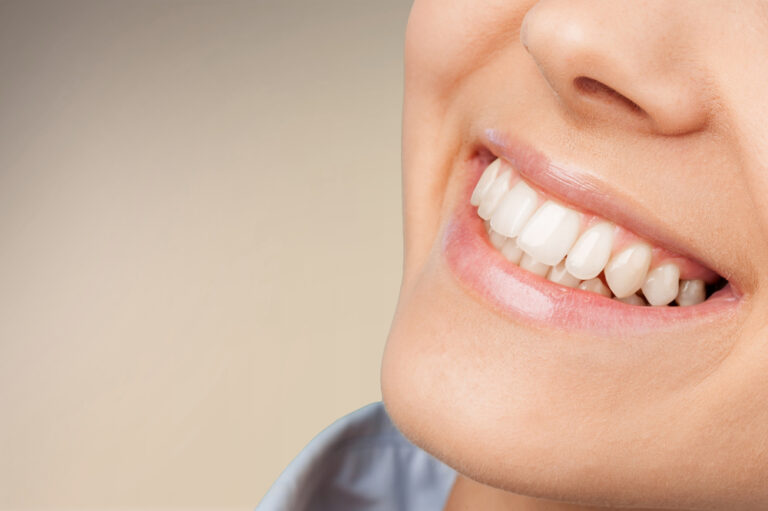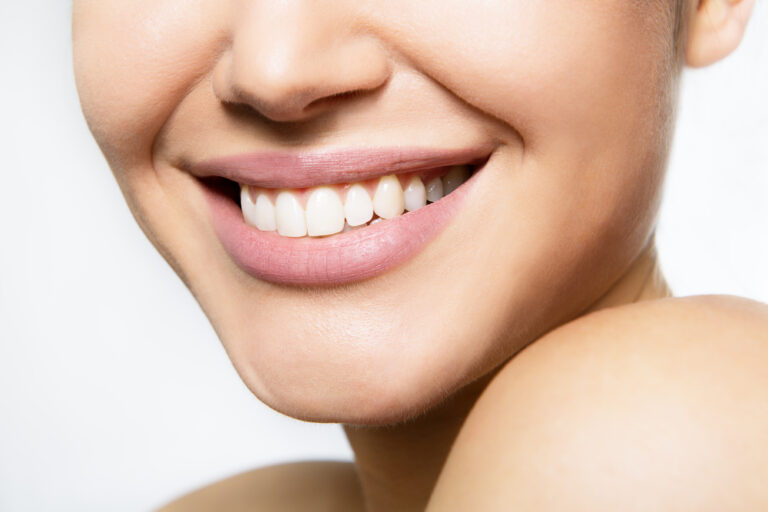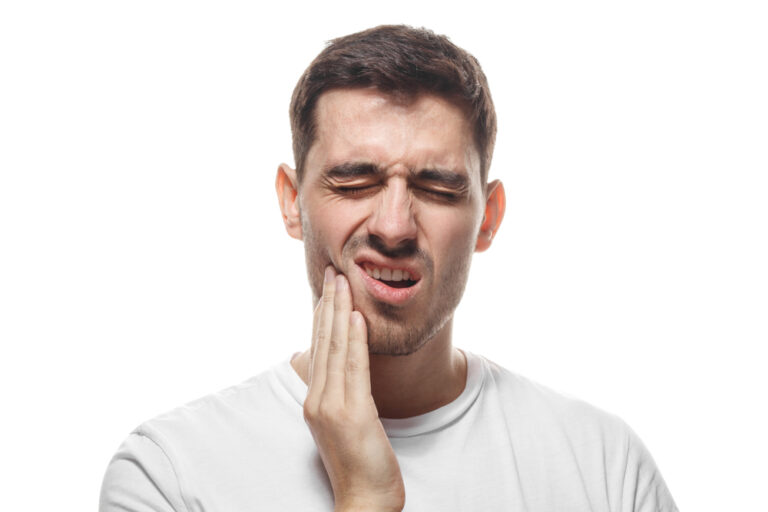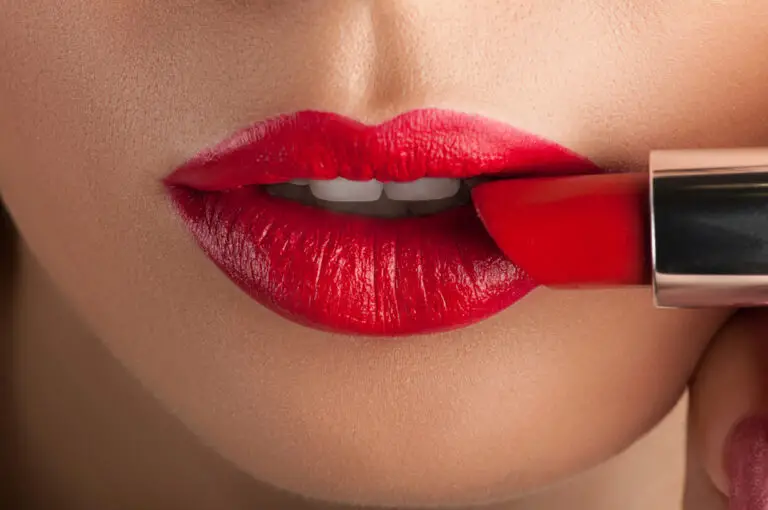Over time, teeth can become stained and discolored from smoking, coffee, tea, red wine and other factors. Many people dream of having a bright, white smile but don’t know where to start. The good news is that today’s modern dental techniques can safely and effectively restore yellowed, stained teeth back to a stunning white shade. This in-depth guide covers everything you need to know about professional whitening options to get your teeth looking their absolute brightest white.
What Causes Teeth to Become Yellow and Stained?
Before exploring how to reverse yellowing, it helps to understand what causes it in the first place. Some tooth discoloration comes naturally with age, while certain habits and conditions can significantly accelerate staining:
Aging – Enamel naturally becomes thinner over time, allowing the yellowish dentin underneath to show through. The outer enamel layer also gradually chips away with use, revealing discoloration. Older people tend to have more transparent, yellowed teeth as a result of aging.
Smoking – Cigarette smoking is highly staining, as nicotine and tar cling to teeth. The longer you smoke and more cigarettes you consume, the more severely your teeth will yellow. Smokers are at very high risk for significant, stubborn tooth discoloration.
Drinking Coffee, Tea and Red Wine – Dark beverages have intense pigment that attaches to tooth enamel. Tannins in wine, tea and coffee contribute to gradual staining over time. The more frequent and longer you indulge in these drinks, the quicker your enamel will be tinted.
Antibiotics Like Tetracycline – Some antibiotics taken during childhood years while teeth are still developing can cause intrinsic discoloration of the inner tooth structure that is impossible to remove with external whitening treatments. Tetracycline and doxycycline are well-known for permanently discoloring adult teeth if taken before age 8.
Excessive Fluoride – Overexposure to fluoride as a child can result in a mineralization condition called fluorosis, which causes white specks, streaks and mottling of tooth enamel. Fluorosis stains are also internal rather than surface-level, so they cannot be bleached away.
Trauma – Falls, sports injuries or other accidents that damage teeth can injure the inner pulp tissue and alter the color. The tooth may die off and turn grey, yellow or brown if the nerve is damaged.
Tooth Decay – Cavities that are allowed to penetrate deep into the tooth’s inner layers can reach the yellowish dentin and show through as discoloration.
Genetics – Some people are just born with thinner enamel or softer dentin that makes teeth appear more transparent and yellow. Porphyria is a rare genetic disorder that causes red/brown discoloration.
Restorations – Crowns, veneers and white fillings won’t change color along with natural teeth when whitened. This can create obvious mismatch between whiter natural teeth and stained restorations.
Diet – Foods and drinks with strong pigments can stain over time, especially without thorough brushing. Soy sauce, ketchup, popsicles, blueberries and other colorful foods can tint enamel.
Clearly, many factors beyond normal aging can turn your pearly whites a dingy yellow. But the good news is that new whitening techniques used by dentists today can often reverse even very severe discoloration for a whiter, brighter smile.
Professional Teeth Whitening Options from Your Dentist
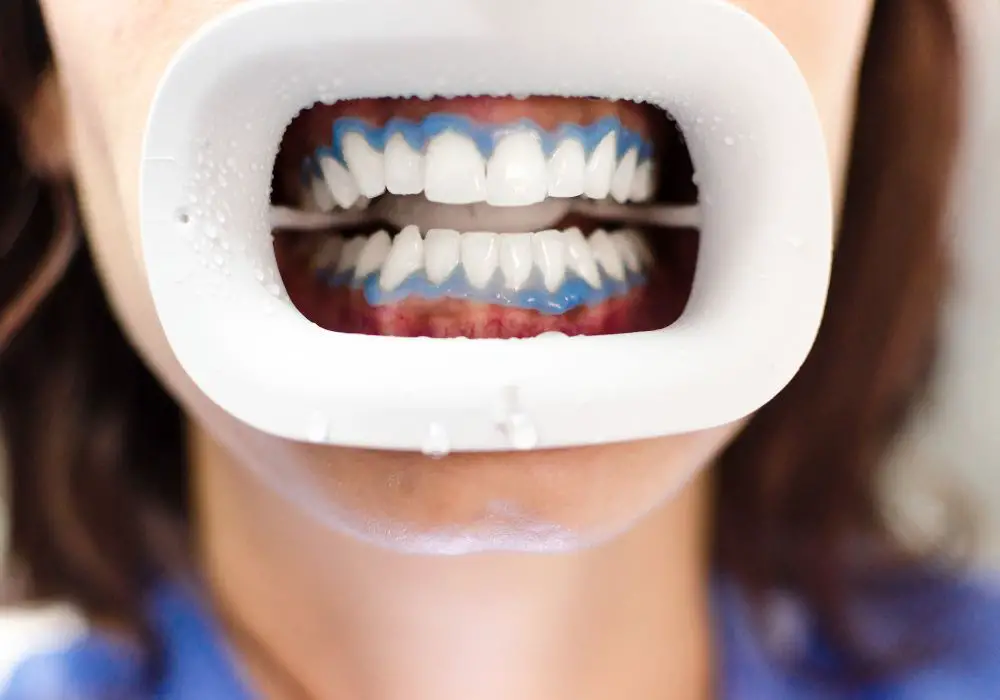
If over-the-counter products haven’t given you the dramatic whitening your teeth need, it’s time to see a dentist about professional in-office treatments. With access to higher concentrations of bleaching agents and advanced light technology, dental whitening can safely whiten teeth up to eight shades lighter with immediate, noticeable results that last.
Here are some of the most effective ways dentists can banish yellow stains and get your teeth sparkling white again:
In-Office Power Bleaching
Also called chairside whitening or dental laser whitening, this fast in-office procedure yields dramatic whitening in just one visit. Your gums and lips will be protected and a powerful peroxide-based bleaching gel is applied to teeth. Advanced light technology like a plasma arc lamp or laser is shone on teeth to accelerate and enhance the bleaching chemicals. The infrared light energizes the peroxide which whitens teeth faster. A single 30-60 minute light-activated treatment can make teeth up to eight shades whiter immediately.
Custom-Fitted Whitening Trays From Your Dentist
Your dentist will take models and impressions of your teeth to have a dental lab fabricate custom-made plastic trays that fit your teeth precisely. You’re given a strong peroxide whitening gel to wear in the trays for 1-2 hours per day or overnight, depending on the product. Wearing the fitted trays for two weeks or longer gradually lightens teeth up to eight shades without sensitivity. This gives you whitening similar to in-office treatments but on your own time frame.
Whitening Toothpastes From Your Dentist
Special prescription-strength whitening toothpastes are available through cosmetic dentists that contain higher concentrations of bleaching ingredients than everyday toothpastes. Used twice daily, they gently lift stains from the enamel surface while brushing. They won’t give dramatic whitening, but are safe for maintaining any in-office whitening results.
Over-the-Counter Whitening Strips
Applied daily for 1-2 weeks, store-bought whitening strips with peroxide can mildly brighten teeth up to six shades. Whitening strips allow you to whiten at home at an affordable price, but the results take longer to see and generally don’t last as long as professional treatments. Ask your dentist if strips are safe for you.
With access to stronger concentrations of products, your dentist can swiftly and dramatically reverse years of discoloration, giving you the whitest smile possible. But before deciding on a treatment plan, your dentist will evaluate your oral health to determine the safest options.
When to See a Dentist About Tooth Discoloration?
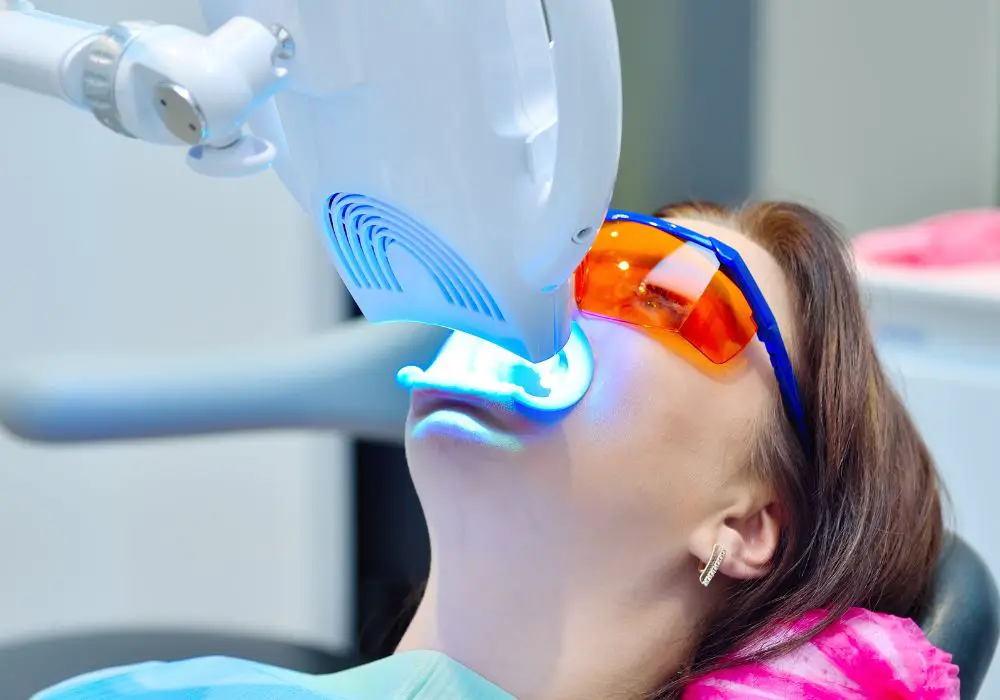
Minor yellowing can often be handled using over-the-counter whitening pastes or strips from the drugstore. But if you notice sudden, severe or unusual staining, it’s important to have your dentist investigate further.
See a dentist right away if you experience:
- Sudden noticeable color changes, especially if only one tooth is affected
- Dark grey, brown or black staining
- Color changes at the gum lines or tooth roots
- Staining only on one area of teeth like between molars
- Color changes after dental trauma like a cracked tooth
- Rapid development of white spots or other defects
Unusual tooth staining or discoloration, especially when accompanied by pain, can indicate underlying problems needing immediate dental treatment. Don’t ignore changes and hope they resolve on their own. Discoloration is often the first visible sign of issues like:
Dental infection – Cavities, tooth abscesses, and gum disease can all cause staining as infection spreads internally.
Nerve damage – If the tooth’s nerve tissue dies due to trauma or decay, the tooth can change color.
Cracked tooth – Fractures allow stains to seep deep into the tooth structure.
Oral cancer – Some oral cancers first appear as painless areas of discoloration on the gums, tongue or inner cheeks.
Internal resorption – This occurs when the body mistakenly destroys tooth structure from the inside, causing cavities and discoloration that require urgent care.
Don’t ignore strange staining in hopes that whitening treatments can fix it – have your dentist examine anything unusual as soon as possible to diagnose and treat any underlying problem.
Whitening Treatment Expectations: Results and Maintenance
After your exciting whitening treatments, you’ll want to know just how white your teeth can really get – and how long you can expect the dazzling results to last. Here’s an overview:
How Many Shades Lighter?
With professional in-office treatments, stains can be lightened up to eight shades or more for a drastic difference you’ll see immediately. More moderate methods like whitening toothpaste might lighten a couple shades over time. The degree of whitening depends on the original tooth color, stain level and product/method used.
How Long Do Results Last?
No tooth whitening method is permanent. Without maintenance and touch-ups, your teeth will gradually revert back to their original color. Whiteness levels are still somewhat subjective, but you can expect treatments to last approximately:
- In-Office Whitening: 1-3 years
- Custom Whitening Trays: 1-2 years
- Over-the-Counter Whitening: Less than 1 year
How to Maintain Results?
Here are some tips to make your whitened smile last longer:
- Brush and floss thoroughly twice daily
- Have professional cleanings every 6-12 months
- Avoid heavily staining foods and beverages
- Use whitening toothpastes or strips for touch-ups
When to Get Touch-Ups?
Most people get teeth whitening touch-ups periodically to keep their smile bright. Depending on the type of whitening done and your habits, you may need maintenance treatments:
- Every 6-12 months for in-office power bleaching
- Once a year for custom whitening trays
- Every 2-4 months for over-the-counter methods
Talk to your dentist about your lifestyle and whitening goals to determine the ideal timeline for touch-ups to maintain your desired level of whiteness.
Is Tooth Whitening Completely Safe? Overview of Risks
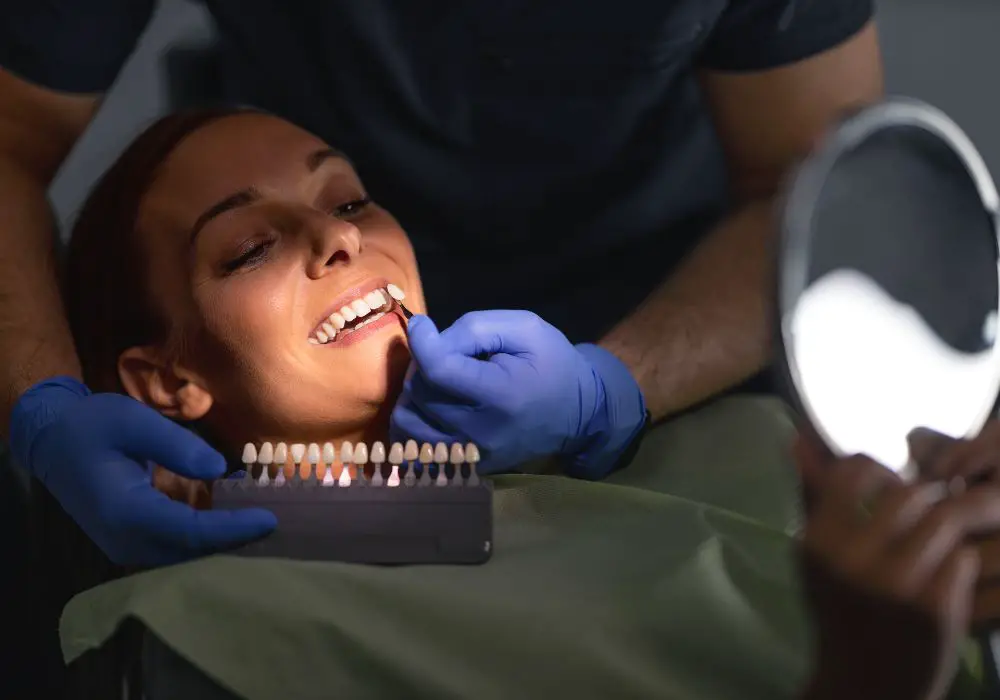
Today’s whitening techniques are widely considered safe and effective when used as directed. However, some people do experience mild to moderate side effects. It’s important to discuss any health concerns with your dentist so they can minimize risks and customize treatment.
Common Side Effects
- Tooth Sensitivity – This affects 60-70% of people undergoing whitening. You may experience temporary mild pain when consuming hot, cold or sweet foods. Sensitivity typically resolves within 1-2 days after completing treatment.
- Gum Irritation – Whitening gel can cause temporary redness, swelling or discomfort if applied to the gums. Dentists use shields and isolation methods to protect soft tissues during in-office treatments.
- Relapse – No whitening method is permanent, so teeth eventually regress to former discoloration without touch-ups every 6-12 months. Some people experience color relapse sooner than others depending on their enamel properties.
Risks for Certain Individuals
People with the following dental conditions or characteristics should avoid whitening or proceed with extreme caution after consulting a dentist, as they are at higher risk for complications:
- Damaged enamel – Existing enamel defects or cracks allow whitening chemicals to penetrate too deeply, causing severe pain, damage and sensitivity.
- Gum disease – Whitening chemicals can aggravate diseased gums and compound problems. Any gum infections should be treated before whitening.
- Fillings and other Restorations – These won’t lighten along with natural teeth. A color mismatch may be created that requires replacement of fillings for uniform shade.
- Inner tooth staining – Surface-only treatments cannot alter intrinsic discoloration inside the tooth from aging, trauma, tetracycline staining or other causes.
- Allergies – Peroxide or other common ingredients can rarely trigger a severe allergic response. Get tested first.
Discuss any preexisting dental work, tooth damage, staining, allergies or other oral health issues with your dentist so they can determine if whitening procedures are advisable for you and which options are safest.
Conclusion
While aging, staining and discoloration may dull your smile over the years, today’s whitening techniques used by cosmetic and general dentists can often reverse the clock and dramatically brighten your smile. In-office power bleaching and custom whitening trays provide fast, noticeable results that can last years with proper maintenance. Even milder over-the-counter methods offer affordable at-home brightening. With the right dental treatments tailored to your needs, you can safely get your yellowed teeth sparkling white again.
Frequently Asked Questions
How long does professional teeth whitening last?
In-office power bleaching can whiten dramatically for 1-3 years, while custom fitted trays lighten moderately for 1-2 years. Whitening toothpastes provide mild lift for a few months. Most people get periodic touch-ups.
Do some teeth whiten better than others?
Yes, your natural tooth shade, genetics, age, and type of discoloration impact results. Yellowed teeth generally whiten better than grey or brown staining. Older teeth respond less than younger teeth. Discuss your specific case with a dentist.
Does insurance cover teeth whitening?
Typically not – cosmetic treatments like teeth whitening are usually not covered by dental insurance. However, if staining is due to medical reasons like radiation therapy, insurance may pay. Check with your provider.
Are whitening strips safe?
Over-the-counter whitening strips are moderately safe if used correctly for short periods. However, misuse can damage enamel. Get your dentist’s okay before using long-term. Professional treatments are safest.
Can a dentist whiten veneers or crowns?
No – porcelain dental work doesn’t change color, so it won’t lighten along with natural teeth. A mismatch may occur after whitening. New replacement veneers/crowns in lighter shade can correct this.
Why did my one tooth not whiten with the rest?
If a single tooth resists whitening, it could indicate a non-vital or dead tooth. See your dentist promptly to check for needed root canal treatment. Stains inside a dead tooth cannot be removed by external bleaching.

